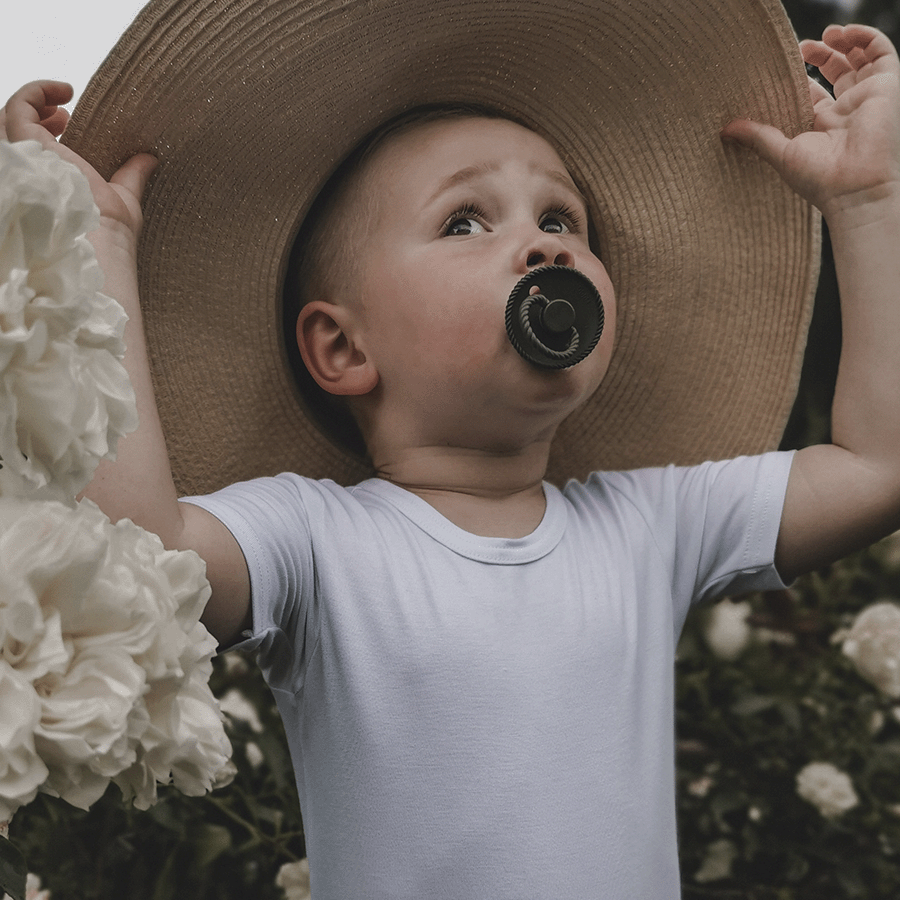
If your child bites through the FRIGG pacifier
If you notice bite marks on your child’s pacifier nipple, we recommend that you start to wean your child off of the pacifier in the nearest future. Pacifiers are intended for your child to suck on; they are not designed to be chewed on.
Always check the pacifier for damage
As soon as your child starts teething, it’s important to check the pacifier on a daily basis. You can do this by pulling the nipple and check for damages. If you see any damage, stop using the pacifier and discard it immediately.
Also read: “When to replace your FRIGG pacifier”
Teethers as alternatives
When the first teeth are starting to break out, your child will typically want to put everything into its mouth. The gums will often feel itchy, and it may also hurt when those little teeth are coming out. If your child is biting through the pacifier nipple, it can be a good idea to get your child a teether. A teether can be more challenging to suck on, but it’s worth the try.
Minimize the use of pacifiers
Minimize the use of pacifiers as soon as you discover bite marks in the pacifier nipple. We recommend that you give your child its pacifier only when it needs to fall asleep. However, if your child continues to use a pacifier by the age of 4, it can result in “pacifier teeth”. This kind of damage usually shows up around the ages 4-6, when permanent teeth are starting to replace your baby’s teeth. To avoid dental problems, it’s important to wean off pacifiers before the age of 4.
Before you start the proces of weaning off pacifiers, you may want to try switching to FRIGG natural rubber pacifiers, if your child uses the FRIGG medical grade silicone pacifiers. Natural rubber is more elastic than silicone, and it is harder for small baby teeth to bite through. But remember that no pacifier is intended for biting.


